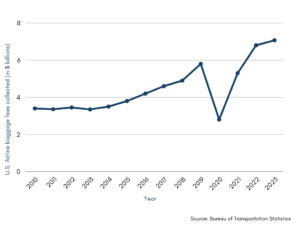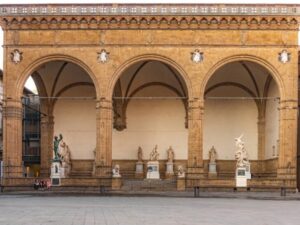Unlocking freedom: The rise of digital nomads living and working anywhere in the world
11 min readThanks to the pandemic, the world is now well-practised at working from home. But what happens when ‘home’ becomes anywhere in the world – so long as you’ve access to wi-fi and a place to prop your laptop on? Reporter Catherine Sylvester talks to digital nomads who have been living the dream and loving it.

Montenegro, Melbourne, Medellin – the choice is yours.
For intrepid Kiwi Hayley Soffe, all three destinations are firm favourites. Other top picks for the graphic designer who specialises in PowerPoint are Albania, Barcelona and Curacao – just a handful of the 60 countries and many cities she’s visited with her “trusty laptop and a sense of adventure” during her 12 years travelling as a digital nomad.
Growing up in Hamilton, Hayley says she always dreamed of exploring the world but wanted to do it “the right way” – which for her meant owning a house by age 21, so she had an asset to return to after her travels, and to which the rent would cover her mortgage. And by gaining enough experience in her chosen industry before setting out, she’d ensure a healthy income once overseas.

Through various twists and turns, she achieved exactly what she set out to do, and by 2011, was living and working in London.
“I was helping pitch for new businesses, and the way that the agencies would work is that they’d have 10 to 20 people in their team [entering] thoughts and screenshots into one presentation and PowerPoint that everyone had access to,” Hayley explains. “At the end of [that process], I’d come in and finesse the presentation and make it all look cohesive.”
Often handing her work at the end of a business day and working through the night to have it ready for start of business the next day, she found herself working for long stretches – her first job took 27 hours.
Planes, trains and automobiles
When her two-year UK visa expired, Hayley spent time in Amsterdam and Menorca before heading to Australia, where she found her savings were fast running out. Realising that working in the opposite time zone to the UK would have its advantages, she approached her previous contacts in London and suggested she work for them during her day [and their nighttime]. It turned out to be a win-win for both parties and has allowed Hayley to work and travel ever since.
The 41-year-old says she was one of the few who could enjoy the lifestyle when she started in 2013, as barriers at the time included a lack of free wi-fi at many destinations, minimal places in which to plug laptops, and uncomfortable spaces to work in.

Such is the nature of her job that she hasn’t actually met many of her clients face-to-face, or even on Zoom or the phone.
“They just send me an email saying, ‘Hey Hayley, here’s the presentation, we need it back in 12 hours’, and I drop everything and get the work done. I could be on a ferry, a bus, a train, or a plane – but I get the work done, whatever it takes.”
Adaptability is key
She still encounters the occasional challenge but has learned to adapt. She now travels with a small collapsable plastic stand that ensures her monitor sits at the right height, a thin Bluetooth keyboard, an ergonomic mouse, and a pair of “real chunky heels that act as a footstool”.
She’s recently embraced trains as a mode of transport, especially in Europe, as they act like a moving office.
“You’ve got wi-fi, you can plug in, and you have a desk,” she explains. “You get amazing views – I’ll be using trains more in the future.”
Aside from six months in Brazil, Hayley has chosen to stay on average two weeks to one month at each destination. Accommodations she’s taken include hostels, the homes of friends she’s met on her travels, a few couches, and the occasional hotel. Having a kitchen available for her to cook a proper meal is ideal, but with food delivery services so prevalent these days, her options for eating while working have expanded.
Chasing the sun
Chasing the sun and awesome experiences have always been top priorities for Hayley, and other than during Covid when she was unable to leave New Zealand, she’s been able to enjoy her goal of back-to-back summers for 12 years.
“I have so many stories. Like manifestation stories, crazy spiritual stories,” says Hayley. “My mission was always to create stories wherever I went, and so I put myself in random situations, you know, just to get a good story.”
Part of her motivation in living life to the fullest is that she was, in her words, “an accident child”, and wants to prove to her parents that she “really appreciates the life that I was given”.

Over the past two years, Hayley has taken 24 trips to Europe and is excited to be heading back this week to a favourite destination to live and work – Bali. She loves scootering and exploring the beach clubs, spiritual hubs, rice fields, and temples so much, that in early 2020 she put her house on the market with an eye to establishing a co-living and co-working business there.
She listed her property and planned a stopover on the Sunshine Coast in Queensland. However, within days of arriving in Australia the pandemic hit and, ever resourceful, she approached a few of the local luxury resorts that had taken a significant hit due to lack of tourism, offering them $450 a week for a two-bedroom, two-bath suite with sea views. They accepted, and that’s where Hayley saw out the rest of the year until New Zealand’s borders opened again.
She’s hoping to stay in Bali for six months, to see if she’s able to set up a business catering to digital nomads in some way, as it’s become a popular destination for those seeking to live and work in a warm and relatively inexpensive climate.
Packing
Having fine-tuned her packing down to one suitcase, one travel pack that doubles as a carry-on, and her laptop bag, Hayley is keen to share her tips with others curious to see if they too can live and work while seeing the world.
“When I first started travelling, my laptop bag was a bit of a beast and weighed about 10kg,” she says. “Over the years I’ve got a bit lighter with that and figured out what I can take for a comfortable setup.”
- Tech – a PowerBank, earbuds, E-sim plan, Wise Travel card, adapters, extra chargers, an old back phone in case yours gets lost or stolen
- Apps – Splitwise, Google Maps and Photos, Airbnb, Agoda (for last-minute deals), Uber, Google Flights or Skyscanner, Google Hotels
- Clothes – op-shopping is a good way to keep your wardrobe fresh, and then donate the clothes you are finished with
- One pair of heels, a pair of washable sneakers, and jandals
- Make up – one palette of eyeshadow, foundation, powder, mascara, blush
- Tampons – in some countries, such as Bali, they are hard to find. Try using a menstrual cup instead
- Charcoal – very handy if you get an upset stomach
- Mini hairdryer and straighteners
- Earplugs, eye mask, hat, a water bottle purifier, travel clothesline, umbrella, poncho/raincoat, waterproof laptop bag
- A good-quality suitcase

Be prepared
Hayley makes sure she sees her doctor, dentist, and hairdresser before she leaves New Zealand for her next round of globe-trotting. She has a dental check and clean, her hair cut to above her shoulders [”Because I’m traveling in summer most of the time, it’s really nice to not have hair on the back of my neck”], and stocks up on broad-spectrum antibiotics, sleeping pills to help on long flights and with jet-lag, and any medication she may need.
Not loyal to any one airline, Hayley shops around to get the best deals she can with flights. She advises planning trips and booking in advance to get the cheapest flights possible.

Romance on the road
Occasional loneliness is one of the few pitfalls that Hayley mentions when sharing about her lifestyle, though she does say that being single and nomadic does have its advantages, as she can travel whenever and with whomever she likes. She admits that her first love is travel, however, to be able to sustain “this lifestyle long term, it would be ideal to find someone who shares the same passion and ability to travel as you. I’ve tried so many times to ‘settle down’ in one place, but the allure of travel is too strong.”
Having experienced some scary moments as a result of meeting people through regular dating apps, she recommends the website and social media account ‘Girls Love Travel’ for women seeking friends to safely connect and go out with. By joining expat groups on Facebook or WhatsApp groups for digital nomads, and going to networking events at coworking spaces, she has found a tribe of sorts.
With more people adopting a digitally nomadic lifestyle, she wonders if meeting someone romantically may now be possible.
Dating app for those on the move
As a digital nomad himself, Taige Zhang knew that finding love when you’re always on the go can be hard and that the usual dating apps potential romantics use are designed for people intending to stay put in one place.
Based in San Francisco, the founder of the dating app Fairytrail has lived and worked in London, Berlin, Toronto, Austin, Dublin, and Warsaw, and leads a team of software engineers as a product manager. He grew up as a “world citizen” and went to 11 schools and universities across three continents.

It was during Covid that he embraced the digital nomad lifestyle as, like so many, he was able to work entirely remotely. He recognised the need for connection as crucial for others working globally like him.
“One of the most important factors for wellbeing and quality of life is having close, loving relationships,” he says.
Taige says Fairytrail differs from other apps in that it is designed specifically for people who will not be staying in one place for long.
“Our goal is to reduce loneliness for digital nomads, remote workers, and van-life travellers,” he explains. “About 50 per cent of our users use it for finding relationships and 50 per cent to find travel buddies.”
Launched as a travel app in 2019, the app pivoted during Covid to focus more on connecting people and currently has 50,000 members worldwide.
Whānau-focused travels
On the other end of the digital nomad spectrum is the family that travels, works, and schools together. The Wiringi whānau of mum Melissa, dad Rimaha, and kids Noah, 16, Aaliyah, 15, Elijah, 7, and Manaia, 2, have spent the past four years exploring the world.
Born and raised in Rotorua, Melissa and Rimaha moved to Australia when the eldest children were preschoolers. Their decision to home-school their tamariki once Elijah was born set them up for the international adventures they embarked on in February 2020.
Like Hayley, the Wiringis found themselves overseas weeks before the pandemic caused borders to close and international travel to become difficult. Having already sold everything to move to Vietnam, Melissa and Rimaha chose to stay in their adopted homeland rather than return to Aotearoa.
“We [had] nothing to go back to,” Melissa says. “It seemed like a bigger risk to come back than to stay at that point. I didn’t anticipate that things were going to stay shut as long as they did.”

Halfway through the family’s 18 months in Vietnam, their savings started to run out, so Melissa found a job working in cryptocurrency, which she’s been able to continue remotely since. Rimaha made sure the kids were looked after, and the children were able to continue with their home-schooling.
As the world started opening up again, the family set out on new adventures. Pre-paid tickets to Turkey were used, with a visit to Greece and some time spent in Spain, where Manaia was born. Explorations of Bulgaria preceeded another year spent in Vietnam.

The family has been in New Zealand since last November and is enjoying exploring the country. Melissa is looking forward to the children learning some of her and Rimaha’s culture, and seeing “New Zealand through different eyes”.
Connecting with other digital nomad families along the way has been helpful, she says. “We made some really good connections with other families while we were travelling.” She suggests Facebook as a good place to connect with groups specifically for families who are living a similar lifestyle to them.
Unlike Hayley, the Wiringis prefer to stay longer in each destination to connect with local communities. Pre-Covid they were moving at breakneck speed, Melissa jokes, but were forced to slow down once the pandemic hit, which she now views as a blessing.
“We went into some really different places than if we’d just spent one month in Vietnam,” she says. “There’s no way we would have made it to some of them.”

By home-schooling their children, the family has been able to move around and enjoy experiences such as Christmas in Bulgaria and watching the hot air balloons in Cappadocia. They’ve lived through two typhoon seasons in Vietnam and are amazed at the resilience of the local people who experience them annually.
For now, the older kids would like to stay in New Zealand for a while, and Rimaha would like to go back to Vietnam. Melissa would like an RV to go exploring in. She says balancing everyone’s needs and wants can be tricky, but for now, they will probably “sit tight and put down some roots and what happens a year from now”.
A parting word
For those of us with itchy feet and a job to-go, the digital nomad lifestyle sounds appealing. By being prepared and courageous, the world could very well be your oyster.
And by remembering a few of Hayley’s key tips, your travels can be a success.
“Keep a positive mindset as travel doesn’t always go to plan, have a sense of adventure, be able to problem solve on the go, and be self-sufficient. By working while you’re away, you can afford to travel for longer, and living like a local is the best way to truly appreciate a place.”
Catherine Sylvester is a multimedia journalist at the Bay of Plenty Times and Rotorua Daily Post. She has a background in feature writing, radio and television, and has taught media at a tertiary level.



